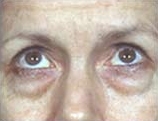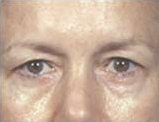Guide to Cosmetic Eyelid Surgery (Blepharoplasty)
The cosmetic procedure used to rejuvenate the upper and lower eyelids is called a blepharoplasty. Also known as eyelid surgery, this treatment can improve the look of both the upper and lower eyelids by removing and/or redistributing fat pockets from the upper and lower eyelids, giving a person a more youthful, rested appearance. Because the eyes are such a focal point and are often what we notice when meeting another for the first time, treating the signs associated with aging in the eyelids can make an amazing difference in a patient’s life.
Eyelid Surgery Procedures
Blepharoplasty surgery is used to treat the following signs of aging:
- The sagging or drooping skin that is responsible for folds and lines around the eyes, which disrupts the natural shape of the upper eyelid, and can even impair vision.
- Excessive fat deposits that make the eye appear puffy.
- Sagging skin under the eyes often referred to as “bags under the eyes.”
- Loose hanging lower eyelids that expose the white of the eye.
- Extra skin and the fine lines associated with age.
Eyelid surgery is one of the most popular and commonly requested facial rejuvenation procedures. It is popular among both men and women for the age defying results. Blepharoplasty is often performed in conjunction with other facial rejuvenation procedures, such as brow or forehead lifts and face lift procedures.
With people living more vibrantly than ever, later into their twilight years, the desire to look as young as one feels is on the rise. With facial rejuvenation procedures such as blepharoplasty, people can maintain their youthful appearance well beyond what Mother Nature had intended.
Blepharoplasty may not be possible for people with:
- Thyroid problems, such as hypothyroidism or Grave's Disease
- Dry eyes or lack of tear production
- High blood pressure
- Cardiovascular disease
- Diabetes
- A detached retina or glaucoma
Blepharoplasty Techniques
Since there are many different reasons for patients to undergo eyelid surgery, the specific method used can vary. Lower eyelids may require surgery if excess skin, fine wrinkles, or puffy bags appear underneath the eyes. In certain cases blepharoplasty is used on people who want a more defined upper eyelid crease. Surgery can also repair puffiness on and around the upper eyelids.
Anesthesia
The procedure can frequently be performed under a local anesthetic, so that patients are awake but do not experience pain during surgery.
Before Eyelid Surgery
- Avoid taking aspirin, Advil, Motrin, or other aspirin-containing products for two weeks.
- If you are a smoker, stop smoking to aid in healing.
- Have available saline eye drops and plenty of ice for post-surgery care.
Recovery After Eyelid Surgery
- Patients feel slight discomfort and irritation for several days.
- Sutures are removed in five to seven days.
- You can return to normal daily activities in about seven to ten days.
Results
After surgery, the eyes will no longer appear droopy, and the skin under the eyes should feel smooth and firm. Instead looking tired or sad, you will appear more awake and alert.










Next Steps
If you are considering a cosmetic procedure, contact us today to schedule your eye surgery consultation. Our team is here to help. Call us at (212) 305-3103 or request an appointment online.
Related
- Brow lift
- Chin Surgery
- Face Lift (Rhytidectomy)
- Botox Injection
- Injectable Fillers
- Cosmetic Nose Surgery (Rhinoplasty)
- Cosmetic Ear Surgery (Otoplasty)
- Neck Lift
- Breast Augmentation
- Breast Reduction (Mammoplasty) & Gynecomastia (for men)
- Breast Lift (Mastopexy)
- Liposuction
- Arm Lift Surgery (Brachioplasty)
- Body Contouring After Weight Loss (Body Lift & Thigh Lift)
- Tummy Tuck (Abdominoplasty)
- Scar Revision Surgery
